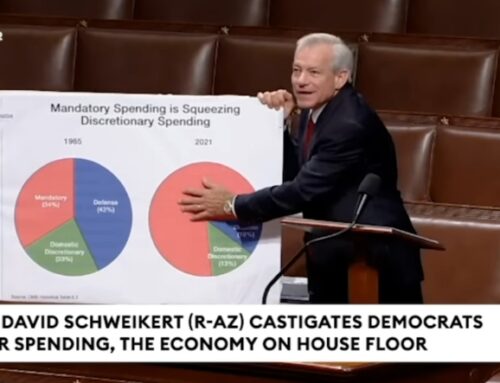News is flying by real fast. Grab your hat, it’s gonna get windy.
The European Central Bank (ECB) is fighting a losing battle. It is easy to tell this is so: they are telling ever-bigger lies about their soon-to-be-really-announced, no-kidding-we-really-have-a-great-plan, bailout program-of-the-hour, ever more frequently. There is no money; the ECB has invented a massively leveraged scheme that creates money without “printing” it, which is forbidden by the ECB charter. It requires the suspension of disbelief. It is a lie; everyone knows it is a lie, and yet no one is allowed to say so. It is an obvious scam that will itself collapse as soon as it is required to actually pay anyone anything more than a few Euro.
The big international banks are out of money and need to be “recapitalized,” which everyone knows means “need to have more taxpayer money stolen and stuffed into them.”
How much new money do they really need?
Financial Times:
Europe’s grand plan to strengthen its banking system is set to fall well short of market expectations, identifying a capital shortfall of less than €100bn that must be made up over the next six to nine months, according to the latest official estimates.
The European Union’s estimate of the necessary recapitalisation effort compares with a recent Inernational Monetary Fund report that identified a €200bn hole in banks’ balance sheets stemming from sovereign debt writedowns. It also falls far short of analyst estimates that banks might have a capital deficit of up to €275bn.
Credit Suisse had other ideas:
We present in this section an overview of the analysis which we published in our report ‘The lost decade’ – 15-Sep 2011. One of our conclusions was that the overall European banking sector is facing a €400bn capital shortfall which compares to a current market cap of €541bn. [emphasis added]
So, someone is lying. Wanna guess who?
This just in! Another day, another plan! In the day since I originally penned this article, Bloomberg has this new report on this hour’s version of the new, newer, newest yet EU bank rescue plan! Money for nothing, and your chicks for free! Woo Hoo!
EU Said to Weigh Use of $1.3 Trillion as Franco-German Discord Mars Talks [damn those Germans who don’t want to bail out the rest of Europe!]
European governments may unleash as much as 940 billion euros ($1.3 trillion) to fight the debt crisis, seeking to break a deadlock between Germany and France that is forcing leaders to hold two summits within four days.
Negotiations on combining the European Union’s temporary and planned permanent rescue funds as of mid-2012, while scrapping a ceiling on bailout spending, accelerated this week after efforts to leverage the temporary fund [emphasis added] ran into European Central Bank opposition and provoked the French-German clash, two people familiar with the discussions said. They declined to be identified because political leaders will have to decide.
The leverage simply guarantees that when they finally do admit that there is no money, more damage will be done and more real capital will be destroyed in the process, making any actual recovery that much harder. It’s the difference between falling from a 5 story building and falling from a 30 story one.
Meanwhile, back at the bond desk, the bank and sovereign debt downgrades have begun in earnest.
Zerohedge: Credit Suisse Buries China’s Banks (NPL is Non Performing Loan):
A view on China’s banks is completely a call on the potential impairment. Hence, we attempt here to dig deeper into the various sources of credit risk, both on- and off-balance sheet. Real estate, manufacturing, local government and SMEs are the four main sources of risk. They account for about 55% of the loan book, in our view, and are expected to contribute more than 80% of potential NPLs. We revise our overall NPL ratio forecast to 8.0-12.0% (from 4.5–5.0% earlier) of loans in the next few years, and NPLs would work out to 65–100% of banks’ equity. Still, we note that this is at best an estimate, and the impairment range could vary, depending on the economic growth and backdrop.
Assuming a loss ratio of 60%, typically the case in many banking crises, the potential loss on the revised NPL range would be 40-60% of the equity in the banking system. [emphasis added]
More sovereign and bank downgrades in the past week, click to read details:
Zerohedge: Moody’s Downgrades Spain Two Notches To A1, Outlook Negative
Zerohedge: Egan-Jones Downgrades Goldman From AA To AA-
And then there’s Bank of America:
This story from Bloomberg just hit the wires this morning. Bank of America is shifting derivatives in its Merrill investment banking unit to its depository arm, which has access to the Fed discount window and is protected by the FDIC.
This means that the investment bank’s European derivatives exposure is now backstopped by U.S. taxpayers. Bank of America didn’t get regulatory approval to do this, they just did it at the request of frightened counterparties. Now the Fed and the FDIC are fighting as to whether this was sound. The Fed wants to “give relief” to the bank holding company, which is under heavy pressure.
This is a direct transfer of risk to the taxpayer done by the bank without approval by regulators and without public input. You will also read below that JP Morgan is apparently doing the same thing with $79 trillion of notional derivatives guaranteed by the FDIC and Federal Reserve.
What this means for you is that when Europe finally implodes and banks fail, U.S. taxpayers will hold the bag for trillions in CDS insurance contracts sold by Bank of America and JP Morgan. Even worse, the total exposure is unknown because Wall Street successfully lobbied during Dodd-Frank passage so that no central exchange would exist keeping track of net derivative exposure.
I only need remind you that much of the paltry $700 Billion TARP program went to pay off credit default swaps, which are allegedly insurance but in practice are really just bets, nothing more. The deep-pocketed taxpayer is the house and gets to pay off the bets. BofA and JPM apparently have sold this “insurance” against EU bank failures, so when the EU banks fail, JPM and BofA will have to pay. But since they don’t have hundreds of billions of dollars / euros lying around, guess who pays?
“More for us, and none for you. Muahahahaha!”






